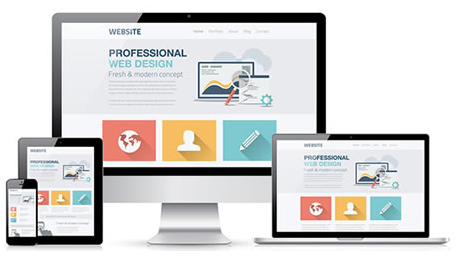In today’s digital landscape, having a strong online presence is vital for any startup, especially in a culturally rich city like Agra. A well-designed website can serve as your business’s face, showcasing your products and services while connecting you with potential customers. If you’re looking to create a custom website for your Agra startup, follow these steps to ensure you build a platform that meets your needs and goals.

Table of Contents
Toggle1. Define Your Objectives
Before diving into the design process, it’s essential to identify your website’s objectives. Ask yourself questions like:
- What do you want to achieve with your website? (e.g., generate leads, sell products, provide information)
- Who is your target audience?
- What features do you want to include? (e.g., e-commerce, contact forms, blogs)
Defining clear objectives will guide your design and content decisions.
2. Choose a Domain Name and Hosting
Your domain name is your website’s address on the internet, so choose a name that reflects your brand and is easy to remember. Once you’ve selected a domain name, you’ll need a reliable hosting provider to store your website files. Look for hosting services that offer:
- Good uptime and speed
- Customer support
- Scalability options
Popular hosting providers include Bluehost, SiteGround, and HostGator.
3. Select a Website Builder or CMS
Depending on your technical skills and budget, you can either hire a web developer or use a website builder to create your site. Popular website builders include:
- WordPress: Highly customizable and user-friendly, making it ideal for startups. It offers thousands of themes and plugins.
- Wix: A drag-and-drop website builder that is perfect for beginners. It has a range of templates and customization options.
- Shopify: If you plan to run an online store, Shopify is an excellent choice, offering all the necessary e-commerce features.
4. Design Your Website
When designing your website, keep your target audience in mind. Here are some key design elements to consider:
- Responsive Design: Ensure your website is mobile-friendly, as many users browse on smartphones and tablets.
- User-Friendly Navigation: Organize your content logically and use clear headings and menus to make navigation intuitive.
- Visual Appeal: Use high-quality images, engaging graphics, and a consistent color scheme that aligns with your brand identity.
- Call-to-Action (CTA): Include clear CTAs throughout your site to guide visitors toward desired actions, such as signing up for a newsletter or making a purchase.
5. Create High-Quality Content
Content is king when it comes to engaging your audience and improving your website’s SEO. Here are some tips for creating effective content:
- Engaging Copy: Write clear, concise, and engaging copy that resonates with your audience. Highlight the benefits of your products or services.
- SEO Optimization: Incorporate relevant keywords into your content, headings, and meta descriptions to improve your website’s visibility in search engines.
- Blogging: Consider adding a blog section to share valuable insights, tips, and updates about your industry. This can help position your startup as an authority in your field.
6. Integrate Essential Features
Depending on your startup’s nature, you may want to include various features on your website, such as:
- E-commerce Functionality: If you’re selling products online, integrate a shopping cart, secure payment gateways, and inventory management.
- Contact Forms: Allow potential customers to reach out easily through contact forms or live chat.
- Social Media Integration: Link to your social media profiles to enhance engagement and broaden your reach.
7. Test and Launch Your Website
Before launching your website, thoroughly test it to ensure everything functions correctly. Check for:
- Broken links
- Responsive design across different devices
- Fast loading speeds
- Compatibility with various browsers
Once you’re confident in your website’s performance, it’s time to launch! Promote your website through social media, email marketing, and local networking to drive traffic.
8. Monitor and Update Regularly
After launching your website, it’s essential to monitor its performance regularly. Use tools like Google Analytics to track visitor behavior, traffic sources, and conversion rates. Based on this data, make necessary adjustments to improve user experience and achieve your business objectives.
Additionally, keep your website updated with fresh content, new products, and industry news to keep visitors engaged and encourage return visits.
Conclusion
Creating a custom website for your Agra startup is an exciting journey that requires careful planning and execution. By following these steps, you can build a professional and engaging online presence that effectively showcases your brand and drives business growth. Embrace the digital transformation, and watch your startup thrive in Agra’s competitive market!


No responses yet